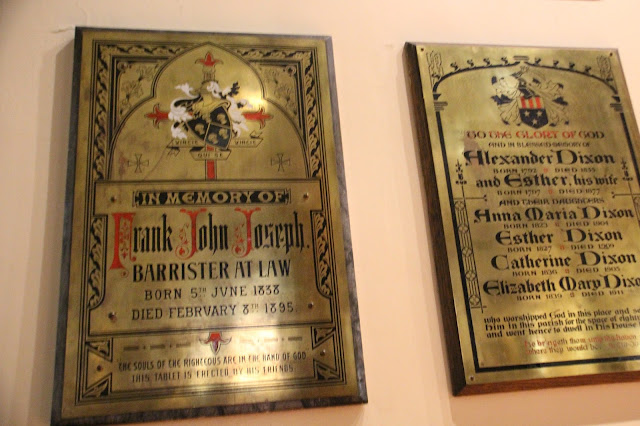July 2016 - Toronto ON
You may be interested in this Toronto church conversion condo for sale.
I thought I had featured St. James Cathedral from the outside before but can't find any mention of it.
I did mention it a couple of weeks ago in a post about Little Trinity Church. Little Trinity was established because people didn't want to pay the high pew prices at St. James a couple of blocks away.
I was very lucky this day as the church was open. This is a rarity in Toronto.
.
In 1849, the Cathedral was destroyed in the first Great Fire of Toronto.
Frederick William Cumberland and Thomas Ridout's Gothic Revival design placed first. Construction began on July 1, 1850, and the Ohio stone and brick Cathedral was opened to the public in 1853. The church's original organ was built in 1853 by Samuel Russell Warren.
However, it would not be until 1873-1874 when the tower and spire, the transepts, and the pinnacles and finials were completed by architect Henry Langley. The spire was the tallest structure in Canada upon completion and would remain so for another 25 years until the construction of Toronto's old city hall. The tower's clock was installed one year later. In 1889, side galleries and aisles were removed, and the choir stalls and organ console were installed in the chancel.
Upon his death in 1867, John Strachan, Toronto's first Anglican bishop, was buried in a vault beneath the High Altar. Dean Henry James Grasett (1808–1882) was also buried here.
West Porch - stained glass by Stuart Reid depicting the calling of St. James the Apostle.
Very modern Station of the Cross signs. 10th - Jesus is stripped of his clothes.
The Eagle lecttern - the eagle is a symbol of St. John.
Bapistry
Photos from the St. George's Chapel.






































Jackie, this is mighty impressive!
ReplyDeleteHow wonderful to see inside - and to see so many familiar names!
ReplyDeleteThe church has a very interesting decor while unique stained glass windows.
ReplyDeleteGreetings from distant Polish.
Monika
wow wee!! pretty. ( :
ReplyDeleteThat was a worth while visit, what a great church, so much to see
ReplyDeleteExquisitely beautiful. Eagle lecterns seem to turn up elsewhere... I think the post I've got for tomorrow has one.
ReplyDelete